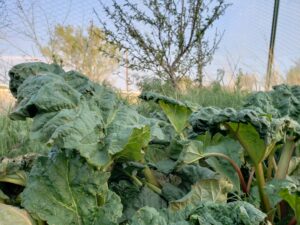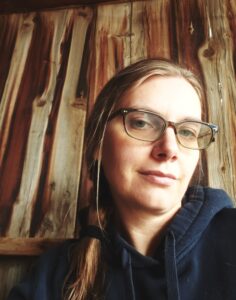 On the first day this year that truly felt like spring, I spent hours outside. I watered the plants and sowed new seeds while enjoying the beautiful temperate weather. It was even a little overcast, so I didn’t have to hide from the harsh sun. I didn’t realize until that moment how much I had missed putting my hands in soil.
On the first day this year that truly felt like spring, I spent hours outside. I watered the plants and sowed new seeds while enjoying the beautiful temperate weather. It was even a little overcast, so I didn’t have to hide from the harsh sun. I didn’t realize until that moment how much I had missed putting my hands in soil.
Most of what I’ve been working to build over the last few years is in some state of shambles. Dry, dead weeds (relentless even when I’m actively working to manage them) are tangled up in all the fences and piled around the trees and garden beds, blocking access to anything I might like to work on. Our old red F250 pickup is parked beside the unfinished kitchen garden, bed still half-full of soil, and the tarp that we used to cover it is in shreds from a year of being wind beaten and sun scorched.
The cardboard I used to tamp down the weeds in the kitchen garden, but never topped with soil or straw or wood chips, is bleached, peeling, or blown away.
Worst of all, the young peach tree that last year seemed the stronger of the two we received as wedding gifts has died. It is now leaning at about a 60 degree angle to the ground, waiting for me (or a strong wind) to pull it up.
Everything is just—a mess.
But even looking around and seeing the work left undone last year and all the work that piled up since in every corner, there is some hope. The strawberries have come back to life, the garlic has put out its long grassy leaves, and the rhubarb reaches up to forms sky-facing cups every evening when the sun relents, hoping to gather any water that might happen to fall. There are even blossoms on the remaining peach tree.
It is spring, and things in nature are starting over. It seems only right that I give it a go, too.
So on the first truly spring-feeling day this year, I went into the garage and navigated my way around the toolbox that was never given a proper home, the chest freezer that was demoted from the house to the garage, the rickety disassembled desk that my husband never liked, but has been moving from house to house since college anyway—all the detritus of life as it slowly evolves—and grabbed my tackle box of seed packets.
I flipped through its sections—this one tomatoes, that one sunflowers—and selected a few varieties that I knew could handle a bit of a chill: beets, radishes, spinach, kale, and Swiss chard. I took them outside to the corner of the kitchen garden to the long narrow bed I created last year.
Less than 2 feet wide and the depth of the railroad ties that form its inner edge, the bed runs the length of the eastern fence. When I built it, I filled it with shredded newspaper, soiled goat bedding, and top soil I’d purchased from the university’s property surplus department. Much of it settled or blew away over the fall and winter, but there was still a solid base for planting.
As I put my seeds in the ground, I took a mental inventory of the other edible plants that have overwintered. Everything feels so uncertain most of the time, but not this.
I don’t know if these seeds will survive. Nor the garlic, the walking onions, the strawberries, the mint. I’ve had enough plants die by now to know that until I’m actually harvesting, everything is—at best a hopeful guess. But I know that if I plant enough varieties, if I replant after a late freeze takes them, if I water regularly, check them for disease, keep the pests away—if I do what I can to care for these plants, some of them will probably turn into food.
That feels about as certain and as stable as the world gets these days.
There is cause and effect to growing. When a plant fails, there is a reason—the sun was too intense, the soil too poor, the water too little, the temperature too low. If you can anticipate the reasons, you can work to improve conditions. If you improve conditions enough, the plants grow better—your yields increase. There’s always a risk, of course; no one can predict everything, and some conditions are too difficult to mitigate. But even those failures teach us how to move forward—how to start again.
Starting again. Starting over. It seems to be the thing I most need. After a relentless year of personal struggles (and a few prior years that weren’t great either), I need to be able to look out at the future and see hope. To look at a broken down garden bed and picture it full of green, growing food. To look around at this decrepit-looking property and see potential, see growth, see life.
It is encouraging that even in my neglected garden, there is food still growing. I planted it long ago with the certainty that on some future day, I would be grateful to have it.
And here that day is.
Here I am, filled with gratitude for the return of these plants, building within myself a new appreciation of the promise of spring.
In spring, things in nature start again. And what am I, if not a creature of nature? I am ready to try again.

